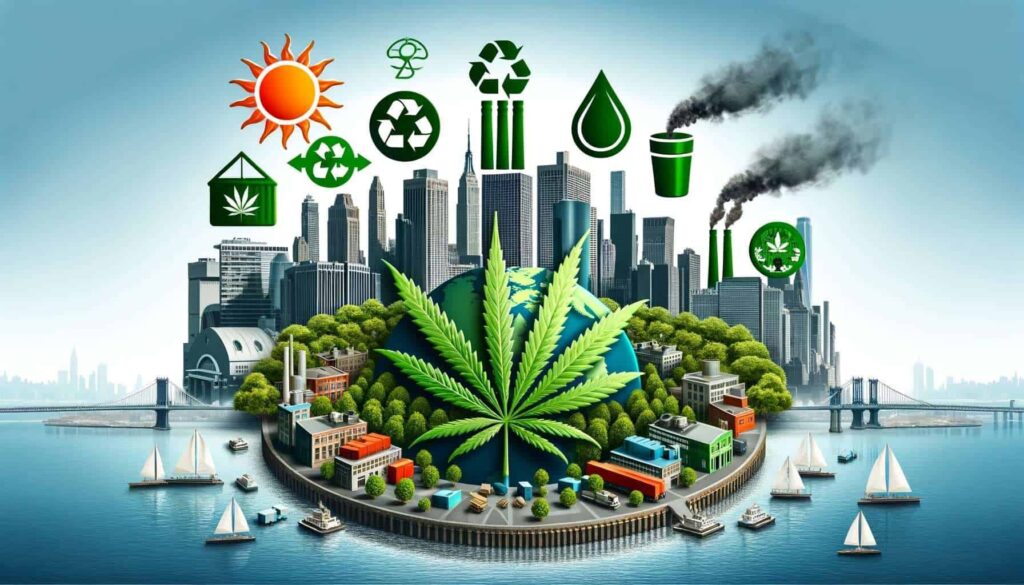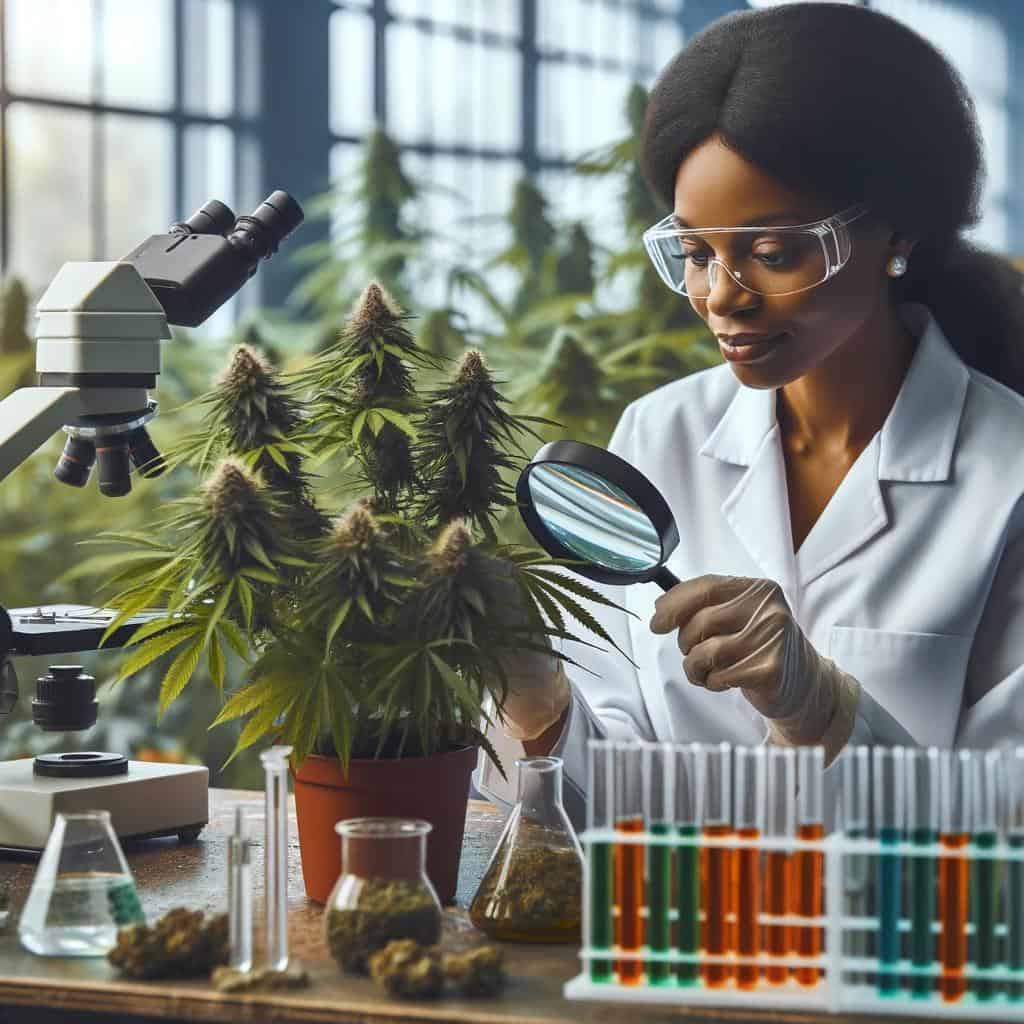- [email protected]
- (619) 304-4004
Exploring the environmental impact of New York’s medical marijuana industry, this blog examines the state’s approach to sustainable cultivation, balancing economic growth with environmental stewardship. It’s a crucial read for understanding how legalized cannabis affects our environment and future industry standards.
Medical Marijuana in New York

The Environmental Impact of Medical Marijuana in New York is a critical issue, particularly as the state advances its regulatory framework for the burgeoning cannabis industry. This framework encompasses the cultivation, production, distribution, sale, and taxation of medical and adult-use cannabis.
The environmental implications of this industry are complex and significant, involving aspects like water usage, energy consumption, and carbon emissions. In New York, where the cannabis sector is rapidly growing, these environmental factors are increasingly pertinent.
The state’s approach to cannabis cultivation is not just about regulation but also about integrating sustainable practices. This is in line with New York’s environmental goals, which include reducing greenhouse gas emissions and promoting renewable energy.
The cultivation of medical marijuana presents both challenges and opportunities in environmental management. It requires careful resource management and adherence to strict environmental regulations, while also offering a chance to implement innovative, sustainable practices.
This blog explores how New York is addressing the environmental impact of medical marijuana cultivation. It delves into the balance between economic growth and environmental responsibility, a topic of interest not only to industry stakeholders but also to anyone concerned about the implications of legalized cannabis on our environment.
Medical marijuana cultivation, like any form of agriculture, has specific environmental impacts that need careful consideration. These concerns are particularly relevant as the industry grows in states like New York.
One of the primary environmental concerns in medical marijuana cultivation is nutrient management. Fertilizers, essential for plant growth, contain nitrogen, phosphorus, and potassium, along with other micronutrients.
However, overuse of fertilizers can lead to significant environmental problems, including the contamination of surface water and groundwater. This contamination is a critical issue, as noted by the U.S. Environmental Protection Agency (EPA), especially in areas where water resources are already stressed.
Maintaining soil health is another significant concern. The use of pesticides and herbicides in cultivation can lead to soil degradation and affect local biodiversity. Pesticides can also enter water systems, causing further ecological harm. The challenge is to manage pests and diseases effectively while minimizing the environmental footprint.
The energy consumption in medical marijuana cultivation, particularly in indoor facilities, is substantial. These facilities often require intense lighting, climate control, and ventilation systems, leading to high energy use and a considerable carbon footprint.
As the industry grows, finding ways to reduce energy consumption and integrate renewable energy sources becomes increasingly important.
Waste management is another critical aspect. Cultivation and processing of medical marijuana generate various wastes, including plant matter and wastewater. Proper disposal and treatment of these wastes are essential to prevent environmental contamination.
Finally, compliance with environmental regulations is crucial. Cultivators must adhere to state and federal laws regarding water use, waste disposal, and pesticide application.
Encouraging sustainable practices in cultivation, like using organic fertilizers, implementing water-efficient irrigation systems, and adopting renewable energy, can significantly mitigate environmental impacts.
While medical marijuana cultivation offers numerous benefits, it also poses environmental challenges that must be addressed. Balancing the industry’s growth with sustainable practices is essential for long-term environmental health and compliance with regulatory standards.
Medical marijuana cultivation in New York, as part of the broader agricultural sector, has a significant impact on the state’s water resources. This impact is multifaceted, involving aspects such as water usage for irrigation, potential contamination from agricultural runoff, and the broader implications of climate change on water availability.
The cultivation of medical marijuana is water-intensive. In New York, where a portion of agriculture relies on rain-fed systems, the introduction of crops like medical marijuana increases the demand for irrigation. This heightened demand can strain local water resources, especially during periods of low rainfall.
The state’s historical climate pattern, characterized by significant summer rainfall, has traditionally supported rain-fed grain and forage crops.
However, with the evolving climate and the introduction of more water-intensive crops, there’s a growing need for supplemental irrigation to achieve maximum productivity, particularly in regions with sandy or compacted soils that have low water-holding capacity.
Another concern is the potential for nutrient runoff from medical marijuana farms. Fertilizers and pesticides used in cultivation can leach into water systems, leading to contamination of surface and groundwater. This runoff can contribute to nutrient pollution, a significant issue in agricultural states like New York. Nutrient pollution can lead to algal blooms and eutrophication in water bodies, adversely affecting water quality and aquatic life.
Climate change further complicates the water resource management in New York. The state is expected to experience increased frequency of late-summer droughts and heavy rainfall events.
These climatic changes can adversely affect the availability and quality of water resources. Drought conditions can lead to reduced water availability for irrigation, impacting crop yields and quality. Conversely, heavy rainfall can cause flooding and runoff, leading to soil erosion and nutrient loss.
To mitigate these impacts, adopting sustainable water management practices is crucial. This includes efficient irrigation systems, such as drip irrigation, which reduce water usage and minimize runoff. Additionally, implementing practices like cover cropping and buffer strips can help in reducing nutrient runoff and soil erosion, thereby protecting water quality.
Medical marijuana cultivation in New York has a considerable impact on the state’s water resources. Addressing these challenges requires a combination of efficient water use, sustainable agricultural practices, and adaptive strategies to cope with the changing climate.
Ensuring the sustainability of water resources is vital not only for the agriculture sector but also for the overall environmental health of the state.
Medical marijuana cultivation, particularly in controlled indoor environments, is an energy-intensive process. Understanding the energy sources used in this cultivation and their environmental impact is crucial for sustainable practices.
The primary energy sources used in medical marijuana cultivation include electricity, natural gas, and, to a lesser extent, renewable energy sources.
The environmental impact of these energy sources varies:
While medical marijuana cultivation is energy-intensive, the choice of energy sources significantly impacts its environmental footprint. Shifting towards more renewable energy sources can reduce this footprint, contributing to a more sustainable cultivation practice.
As the industry grows, integrating environmentally friendly energy solutions will be crucial for long-term sustainability and reducing the overall impact on climate change.

The cultivation of medical marijuana, like any agricultural practice, can significantly impact the environment. Adopting sustainable practices is crucial to minimize this impact and ensure the long-term viability of the industry. These practices focus on efficient use of resources, reducing environmental footprints, and promoting ecological balance.
Water is a critical resource in marijuana cultivation. Implementing efficient irrigation systems, such as drip irrigation, can significantly reduce water usage. Collecting and using rainwater, and recycling water within the cultivation system, are also effective strategies. These practices not only conserve water but also reduce the runoff of nutrients and pesticides, protecting local waterways.
Energy consumption, particularly in indoor cultivation facilities, is a major concern. Using energy-efficient lighting (like LED lights), optimizing climate control systems, and incorporating insulation can reduce energy demand. Additionally, shifting to renewable energy sources such as solar or wind power can significantly reduce the carbon footprint of cultivation operations.
Using organic cultivation methods reduces the reliance on synthetic fertilizers and pesticides, which can be harmful to the environment. Organic practices include using natural pest control methods, composting, and using organic fertilizers. These practices not only protect soil health and biodiversity but also can produce a higher quality product, which is often more appealing to consumers.
Effective waste management is essential in sustainable cultivation. This includes composting plant waste, recycling growing mediums, and responsibly disposing of or repurposing non-biodegradable materials. Reducing waste not only minimizes environmental impact but also can reduce operational costs.
The packaging of medical marijuana products often involves plastic and other materials that can be environmentally harmful. Adopting biodegradable, recyclable, or reusable packaging materials can significantly reduce the environmental impact of these products.
Adhering to environmental regulations and best practices is crucial for sustainable cultivation. This includes compliance with water usage regulations, waste disposal laws, and pesticide use guidelines. Staying informed and compliant not only protects the environment but also ensures the long-term sustainability of the cultivation operation.
Engaging with the local community and educating stakeholders about sustainable practices in cultivation can foster a more environmentally conscious approach within the industry. This includes sharing best practices, participating in environmental initiatives, and collaborating with local environmental groups.
Adopting sustainable practices in medical marijuana cultivation is essential for minimizing environmental impact, ensuring regulatory compliance, and promoting the long-term sustainability of the industry. These practices not only benefit the environment but can also enhance the quality of the product and the overall profitability of the cultivation operation.
Yes, renewable energy can be effectively integrated into medical marijuana cultivation, offering a sustainable solution to the high energy demands of this industry. This integration not only helps in reducing the carbon footprint associated with cultivation but also aligns with broader environmental goals and can lead to long-term cost savings.
Here are key ways renewable energy can be integrated:
Integrating renewable energy into medical marijuana cultivation is not only feasible but also beneficial from both an environmental and economic standpoint. As the industry grows, the adoption of renewable energy can play a significant role in ensuring its sustainability.

Environmentally friendly home cultivation of medical marijuana involves practices that are sustainable, conserve resources, and minimize ecological impact.
Here are some best practices that home growers can adopt to ensure their cultivation is environmentally responsible:
By following these best practices, home cultivators can grow medical marijuana in a way that is respectful to the environment, conserves resources, and promotes sustainability. This approach not only benefits the planet but can also lead to healthier plants and a more rewarding cultivation experience.
The main environmental concerns include high water and energy usage, potential for chemical runoff from pesticides and fertilizers, waste management issues, and the carbon footprint associated with cultivation practices. These factors can affect local ecosystems, water resources, and contribute to greenhouse gas emissions.
Medical marijuana cultivation, especially in large-scale operations, can significantly increase water demand. This heightened usage can strain local water supplies. Additionally, improper management of runoff water containing fertilizers and pesticides can lead to water pollution, affecting both surface and groundwater quality.
The most common energy sources include electricity (often from the grid) and natural gas. Electricity is primarily used for lighting, heating, and cooling in indoor cultivation facilities. These energy sources, especially if derived from fossil fuels, contribute to greenhouse gas emissions and have a substantial environmental footprint.
Yes, renewable energy sources like solar, wind, and geothermal can be integrated into medical marijuana cultivation. Utilizing these renewable sources reduces reliance on fossil fuels, thereby decreasing the carbon footprint and overall environmental impact of cultivation operations.
Best practices include using energy-efficient lighting and HVAC systems, implementing water conservation techniques (like drip irrigation and rainwater harvesting), adopting organic farming practices, managing waste responsibly, and using renewable energy sources. Additionally, compliance with environmental regulations and engaging in sustainable packaging and transportation practices are crucial for minimizing environmental impact.
The cultivation of medical marijuana in New York poses significant environmental challenges, primarily due to its high resource intensity. Key issues include substantial water and energy consumption, particularly in indoor facilities, and the potential for chemical runoff from fertilizers and pesticides. Additionally, waste management and the carbon footprint associated with non-renewable energy sources are major concerns.
However, there are opportunities to mitigate these impacts through sustainable practices. Integrating renewable energy sources like solar and wind can drastically reduce carbon emissions. Efficient water use, including advanced irrigation systems and recycling, can conserve vital water resources.
Organic cultivation methods can minimize chemical runoff, enhancing environmental safety. Adherence to environmental regulations and a commitment to sustainable practices are essential for the industry’s future. Emphasizing these aspects can ensure the medical marijuana industry in New York grows responsibly, aligning with broader environmental and sustainability goals.
https://cannabis.ny.gov/patients
https://www.mpp.org/states/new-york/
https://norml.org/laws/new-york-penalties-2/
https://cannabis.ny.gov/practitioners
https://cannabis.ny.gov/medical-cannabis
https://cannabis.ny.gov/medical-cannabis-program-faqs

A1 Marijuana Doctors is an online platform, that connects marijuana patients to marijuana doctors in their state.

A1 Marijuana doctors is an online platform that connects medical patients to medical marijuana doctors. We offer a quick & easy way to apply for a medical marijuana card in all legal states.
Social Links
Contact Us
Quick Links
Trusted By




This website does not sell medicine nor controlled substances. It is a network of doctors & nurse practitioners, not a pharmacy / dispensary.
Copyright ©2023 A1 Marijuana Doctors. All rights reserved.